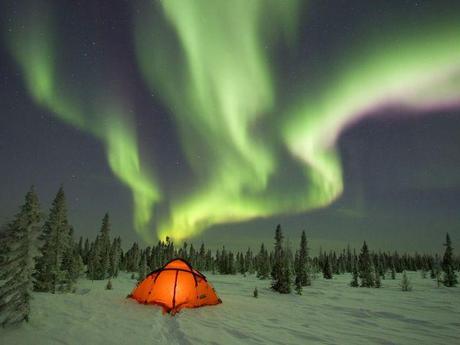 I have been fascinated The Northern Lights have me ever since I have known about them. It’s hard to imagine seeing the night sky alight with streaks of colour dancing like some amazing freak-of-nature induced acid trip. Like many others-this has featured high on my bucket list for a long time. This desire was reignited again recently by the beautiful description that a close family friend explained gave of the phenomena to her son when she described them as ‘a glorious visual feast‘ and ‘a concert in the sky‘. These descriptions lit a burning desire inside me to bear witness to it.
I have been fascinated The Northern Lights have me ever since I have known about them. It’s hard to imagine seeing the night sky alight with streaks of colour dancing like some amazing freak-of-nature induced acid trip. Like many others-this has featured high on my bucket list for a long time. This desire was reignited again recently by the beautiful description that a close family friend explained gave of the phenomena to her son when she described them as ‘a glorious visual feast‘ and ‘a concert in the sky‘. These descriptions lit a burning desire inside me to bear witness to it.
What are the Northern Lights?
In the northern hemisphere, we call it the Aurora Borealis (while the southern gets the Aurora Australis). From the Earth, it looks like great multicoloured ribbons dancing slowly and provocatively across the sky… From space, it is clear that something interesting is happening in Earth’s atmosphere:

Aurora over Earth, taken from the International Space Station.
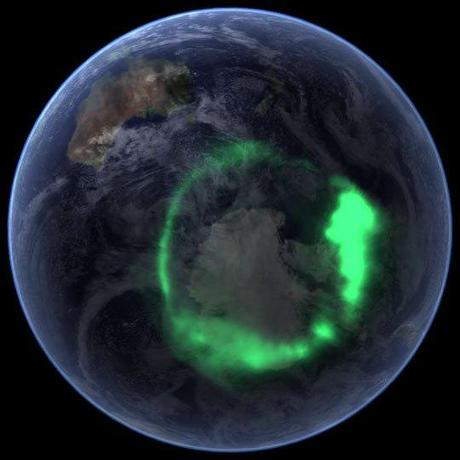
NASA’s Satellite Image of the Aurora Austrealis (Southern Lights) over the Antactic Polar region
The incredible temperatures and energies of the Sun ionise matter, and send charged particles hurtling through space towards us at thousands of kilometers per second. Earth’s magnetic field bends these charged particles, meaning that, for the most part, our planet deflects this harmful solar radiation safely away from Earth… Except, that is, near the North and South magnetic poles, where those field lines all appear to enter/exit our planet. And whenever the Sun emits a solar flare or sends packets of radiation hurtling towards us, Earth’s magnetic poles act as funnels, pulling the charged particles into the upper atmosphere in a ring around the magnetic poles! As these particles enter the atmosphere, they’re energetic enough that they knock electrons off of their atoms in the atmosphere, causing the light shows.
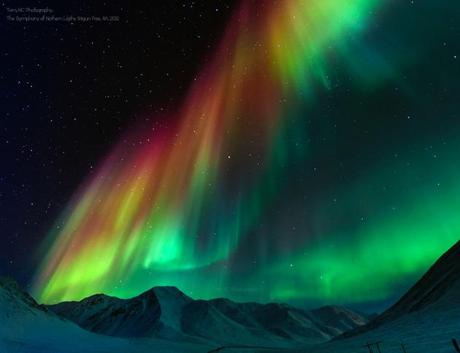
A Great example of the range of colours you might be able to see if you witness a period of high solar activity
Why are some displays just Green, but others are multicoloured?
As the electrons enter the earth’s upper atmosphere, they will encounter atoms of oxygen and nitrogen at altitudes from 20 to 200 miles above the earth’s surface. The color of the aurora depends on which atom is struck, and the altitude of the meeting.
- Red – oxygen, above 150 miles in altitude
- Green – oxygen, up to 150 miles in altitude
- Purple/violet – nitrogen, above 60 miles in altitude
- Blue – nitrogen, up to 60 miles in altitude
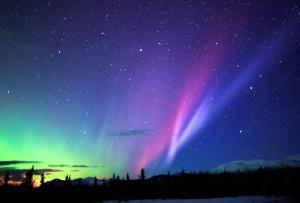
Be warned, it will set your hopes high:
In reality, if you are lucky enough by some chance to see them… You are far more likely to see something like this:
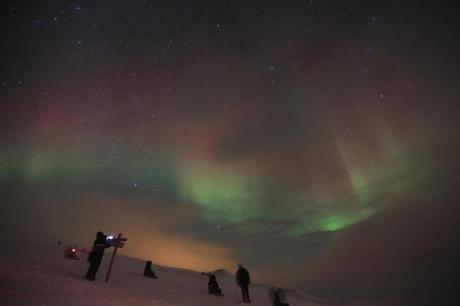
Realistic expectation of what most people see when they say they’ve seen the Northern Lights
We failed to see them when we visited Finish Lapland on a Santa trip before Christmas, which only served to increase my appetite to see them further. In honesty, seeing the lights is not an ideal family holiday activity to plan if you have young children in tow… Mainly because the optimum conditions for viewing the lights tend to be:
- Between 10pm – 3am (i.e: when most children are tucked up in bed)
- Above the Polar Circle (i.e: where the frigid temperatures are hard for little ones to tolerate for long)
- Away from light pollution (i.e: away from civilisation)
I researched at great length where the best places to view the Northern Lights are… Not all places that sell Northern Lights trips are equally good for seeing them. For most people, a Northern Lights trip is a once in a lifetime type of trip, not least because it is hugely expensive! I know so many people who have been on trips to see the Northern Lights, but have come home disappointed (myself included). However, with a little bit of research, you can maximise your chances of observing them… Location Location Location So why did I choose Sweden?
Several factors need to come together to allow us to view a Northern Lights Display:
- Clear Skies – Clouds will block a display from view, even if it is present above them.
- Low Light Pollution – Lights from a town, or even a full moon will diminish your chances to witness this phenomenon.
- Be at a very Northerly Latitude (ideally above the Arctic Circle) – This is where the most activity is visible.
- High Solar Activity – Without solar wind, there are no lights. Solar activity generally runs in 11-12 year cycles. 2012-2013 was meant to be the peak of that cycle, so the next 2 winter seasons will also be good statistically.
Temperature/Weather: I decided against going transatlantic to see them in Canada or Alaska for several reasons. Time to travel there and jet lag, I wanted to see them in a Scandinavian/Nordic environment and also Canada and Alaska are vastly colder at the same latitudes than Scandinavia (because the warm gulf stream (North Atlantic Drift) passes to the East of Greenland and heads East to Norway delivering some of its heat to Norway. Greenland however gets the freezing westerly winds blowing straight from the Arctic circle) making Scandinavia the less harsh environment prom a practical stand point! I also chose March because this was the time of the mildest weather, which would give us the best chances for clear skies.
Latitude: I ruled out Iceland because although it’s possible to witness them there, it isn’t actually in The Arctic Circle, and a lot of the trips sold there are near to large cities with lots of light pollution meaning that you only have small windows to view it during special excursions during the trip.
Geographical Location/Micro-climate:
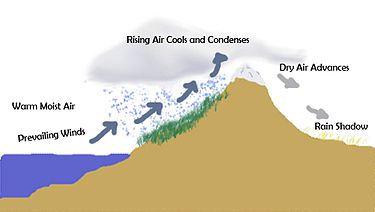
Micro Climate, Rain Shadow
If you are likely to be in a mountainous region, this can work for you or against you depending on certain criteria. For example, in Saariselkä, Finland (where we went in December) the mountainous area causes a microclimate that means you tend to see more rain/snow/cloud there than other areas on the opposite side of the mountain range… It is the same for the area of Norway on the opposite side of the mountain range to Abisko, where we stayed. Abisko however, is in a favourable microclimate called a ‘Rain Shadow‘
Photograhy:
I ruled out a Northern Lights Cruise, because whilst this would undoubtedly offer some of the best conditions to see the lights in, we also wanted to photograph the lights. It is difficult to photograph the aurora without a decent SLR camera and a tripod, as you need to expose the image for a considerable length of time in order to get the best image. Even an amateur photographer knows that slight camera shake would reduce the quality of any pictures, making them blurry-so bobbing about at sea was not going to be ideal.
Shortlist:
The 2 places that seemed to offer the best options as far as I could tell were Tromso in Norway and Abisko in Sweden… Both of these places have Northern Lights observatory stations which are specially dedicated to aurora viewing. In the end, we opted for Sweden because of it’s proximity to The ICEHOTEL, the World’s first, and largest ice hotel which was another item on My Bucket List. According to the scientists at IRF in Kiruna you have about an 80% of seeing the auroras (near Abisko) if you stay in the area for at least 3 days. I wanted to maximise the opportunities to see the lights, so this was pretty compelling for me… We also decided to do it fairly promptly as this year was meant to be the peak of the solar/aurora activity.
Aurora Notification
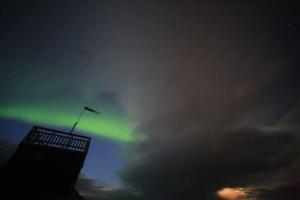
Aurora Sky Station Live Camera Feed Image
One thing I think is particularly good about the Abisko Sky station, is their Live Website Camera Feed. You can watch this at any time to see what is happening there. We often watched it from the hotel bar, when we became too cold to stand out in the cold night air in anticipation of the lights, and would duck out if they started to appear on the screen. My partner’s parent’s stayed at a great hotel in Norway that also had an ‘Aurora Warning System’ in place, where all guests were allocated a beeper that would go off when the aurora was visible so that guests didn’t have to sit in the freezing cold all night in vain hope of seeing them. I think this is a fantastic idea-and I can’t understand why more hotels in the region haven’t cottoned onto this idea yet!
Our Experience
Unfortunately, the solar activity wasn’t massive when we went.
Bloody typical!
As such, we weren’t treated to the type of display that lights up the night sky so brilliantly that even the people with naff camera phones able to snap a picture of it… Typically - Just a week before we visited, the display was so bright that the night sky was lit up as bright as if it were day time! Whilst we didn’t see a dazzling display like this, the elusive Northern Lights did thankfully put in an appearance for us though.
When we first saw the aurora; I wasn’t sure if we were looking at the Northern Lights or not. It looked like a hazy green(ish) wispy looking smoke trail across the sky. The image that it conjured was less ‘WOW’ and reminded me more of pollution to be honest. It was a little disappointing. Especially since everyone else there seemed to be really thrilled about it.
BIG ANTI-CLIMAX.
Then they disappeared as the sky clouded over again. After waiting for several hours we decided to hit the sack, but before we peeled off all of our clothing layers, my partner insisted we nipped out for one last hopeful peek before we gave up. We were rewarded with a much brighter arc of pale green light stretching across the expanse of the sky. It still looked quite smokey to the naked eye, but it was discernibly light and green. We ventured out to a remote clearing with the camera and left the shutter open for 30 seconds…
We waited for the image to process with baited breath, and finally, the image popped up-there on the camera screen was the kind of image you see in the Northern Lights trip brochures! …An attention-grabbing, bright neon-green streak across the night sky! You could even make out faint red and yellow lights that are rarer to witness at higher altitudes. these had not been visible to the naked eye at all-but of course the camera was able to absorb far more light in 30 seconds than our own eyes can in real time, meaning that the images look very dramatic compared to what we were really able to observe without the aid of a lens.
These are the pictures that my partner took:
This slideshow requires JavaScript.
Mixed Reaction
This was a mixed reaction for me… On the one side I felt ecstatic and privileged to have finally witnessed the aurora borealis. There was definitely a WOW feeling, but a little part of me felt like I did as a child when I opened the Christmas gift I had yearned for and dreamt about for months on end, only to learn that batteries were not included and I’d have to wait until after Christmas to be able to use the damn thing. Short sold. Part of me wondered if that’s all people ever saw, though we were assured by other people on the trip that this was not the case. It also makes me wonder just how those stunning images from all of the pictures really look to the naked human eye behind the lens of the professional images. So whilst I can say I have officially ticked this item off my list-I still honestly lust after another chance to see the lights in their fullest, most-glorious, sky-concert, show-off best. Call me Oliver Twist!
Other posts you might Like:
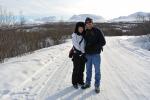
Visit Abisko National Park, Sweden
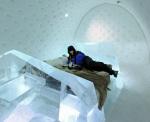
Stay at The ICEHOTEL, Sweden
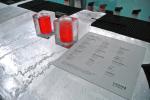
Drink Vodka in an ICEBAR
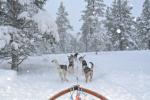
Husky Racing / Dog Sledding in Lapland
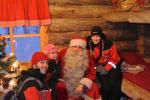
Visit the Real Santa in Lapland!
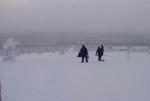
Longest Toboggan run in Lapland!
